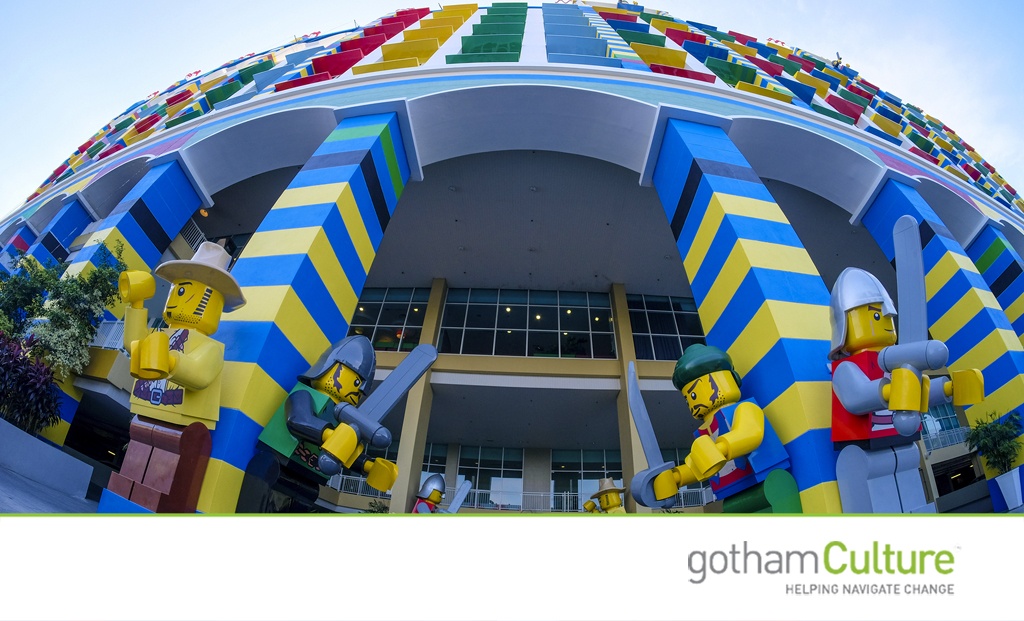A few weeks ago, my wife and I took our six-year-old son on the requisite pilgrimage to LEGOLAND Theme Park in Carlsbad, California. As an avid LEGO “Master Builder”, my son was beyond excited to spend two days completely immersed in brick-building adventures. As a secret LEGO lover myself, I have to admit, I was pretty stoked as well.
I’d never been LEGOLAND before, so I had an opportunity to experience the park with zero expectations — minus the lingering concerns of crowds and hour-long lines that any parent faces with two days in a theme park.
Not only did our family have a great time; we spent most of our flight home reliving the details. And as we put the pieces of our trip back together, I began to deeply appreciate LEGOLAND’s approach to building an exceptional customer experience for their fans.
Now, I’m not naïve enough to believe these brands haven’t taken painstaking efforts to craft the experience to have a certain effect — which usually includes me spending money. Most competitive businesses today understand that cultivating exceptional customer experiences is critical to customer satisfaction and brand loyalty.
But how do they do it? How do companies empower their employees to engage customers in ways that create unique, authentic and unscripted experiences?
Building Employee-Driven Customer Engagement
You may not know it from all the colorful LEGO décor, but LEGOLAND California is owned by Merlin Entertainments plc, a global leader in location-based, family entertainment. The British company operates more than 100 attractions, 13 hotels, and 5 holiday villages in 24 countries. Its locations attract more than 63 million visitors and employ about 27,000 employees.
A while back, I wrote about my experience at Disney World. I was particularly impressed with the story of how the janitorial staff, in an effort to turn their somewhat thankless jobs into a way to delight Disney’s customers, began to fill their rubbish cans with water and paint well-known Disney characters on the walkways.
At LEGOLAND, customers are invited to interact directly with their Model Citizens (LEGOLAND employees) throughout the day through the process of trading Minifigures, the iconic LEGO people that come in a million different configurations. Any customer, at any time, can approach a Model Citizen and trade a Minifigure (with all parts attached, of course) for one that the employee has on their brick badge (name tag), or in display boxes that they carry, for free.
“Our Model Citizens play an important role in creating an engaging environment for all our guests at our LEGOLAND Parks, helping enhance their interactivity with the park and in turn delivering them an experience they won’t forget,” shared Merlin Entertainments’ CEO, Nick Varney.
The Minifigure trading program is worldwide at all 7 LEGOLAND Parks, but originated at LEGOLAND California in 2013. Model Citizens have trading stations in retail and food and beverage locations across the Park and there’s a ‘Tip Board’ in the Beginning (first section of the Park) along with a trading station for guests starting their day.
This simple activity doesn’t cost the company a dime (in fact, parents often purchase Minifigures for their children to trade) and it provides a unique and unscripted opportunity for employees to engage and develop deeper connections with the customers they serve.
The Benefits of Employee-Driven Customer Engagement
Customer engagement may be designed and encouraged by the company, like at LEGOLAND, or they may develop in a more organic, grassroots way. Either way, the benefits are undeniable.
According to Gallup research, fully engaged customers represent an average 23 percent premium in terms of profitability, revenue, and loyalty compared with the average customer. In hospitality specifically, fully engaged guests spend 46 percent more per year.
But the benefits of customer engagement reach far beyond revenue alone. Investing in a culture of exceptional customer experience can also:
- Increase customer promotion and referrals to your product or service;
- Increase the likelihood that they will return and repurchase;
- Increase employee engagement as they see the impact of their work and feel empowered;
- Enable peoples’ creativity, allowing them to shine in ways that improve the experience and benefit everyone involved;
- Tangibly reinforce the notion that employee input and ideas are not only welcome, they are valued.
Customer engagement isn’t a single grand gesture. Much like opening that new LEGO set, it often means unpacking and organizing all of your customer touchpoints, identifying opportunities for new pieces to fit, and building new ways to improve the entire customer experience from beginning to end.
This article originally appeared on Forbes.
Your Guide to Employee Engagement

Learn how to engage, retain and develop your talent to drive performance.
Sign up to our newsletter and receive your free guide to a more engaged organization.
Success! Please check your email to confirm your subscription and download your free guide.

